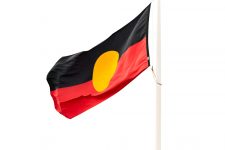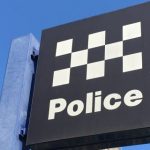Indigenous deaths in custody – 25 years on from the Royal Commission

An Indigenous family is facing the Coroner’s Court in Queensland, searching for answers about the death of Bradley Coolwell, who died in 2011 after being restrained in Logan Hospital.
For Coolwell’s family, hearing accounts of Bradley’s final days has been “harder to sit through than his funeral”. Despite police claims about his conduct, Coolwell’s family contend that his schizophrenia was well managed and he was not prone to violent or threatening behaviour.
The Court has heard that detectives attending the scene of Coolwell’s death observed marks on his body – bruising on his chest and arm and a small amount of blood on his nose and cheek – as he lay on the floor of a seclusion room.
It was previously reported that Dr David Storey, who conducted Coolwell’s autopsy, found evidence of mild to moderate force being used but nothing that could be seen as a cause of death in its own right.
Dr Story said a condition known as ‘extreme delirium syndrome’ – whereby a person suddenly dies after being in a state of heightened agitation – is, in his opinion, of “limited relevance”. The condition has been linked to deaths involving multiple police officers restraining agitated people, some high-ranking medical bodies do not recognise it as a specific condition. Dr Story also said Mr Coolwell was suffering from acute bronchitis at the time of his death.
Coroner James McDougall is now tasked with sifting through the facts of the case, hearing all of the evidence and determining how yet another Aboriginal person died while in police custody.
Indigenous deaths in custody
Despite the Royal Commission into Aboriginal Deaths in Custody, which occurred 25 years ago this month, these tragic incidents keep occurring.
The Deaths in Custody Watch Committee says that despite the well-documented outcomes of the Royal Commission, the number of deaths of Aboriginals and Torres Strait Islanders in custody is actually on the rise.
The Royal Commission investigated Indigenous 99 deaths between 1980 and 1989. At its conclusion, it made 339 recommendations.
Last year, a report by law firm Clayton Utz found that, even after all this time, the bulk of the Commission’s 339 recommendations have not been implemented, or have only been partially implemented.
Four Indigenous people died in custody in 2015.
The final report by the Royal Commission in 1991 stated that, of the cases it reviewed,
“More than one-third of the deaths (37) were from disease; 30 were self-inflicted hangings; 23 were caused by other forms of external trauma, especially head injuries; and 9 were immediately associated with dangerous alcohol and other drug use.
Indeed, heavy alcohol use was involved in some way in deaths in each of these categories.”
The Commission concluded that rather than foul play, in the sense of unlawful and deliberate killings, glaring deficiencies in the standard of care afforded to many of the deceased were a major contributing factor to Indigenous deaths.
Fast forwarding from 1991 to 2014, the statistics suggest that very little has changed.
The case of Ms Dhu
In August 2014 Julieka Dhu became the 340th Aboriginal person to die in custody since the Royal Commission. Ms Dhu died at South Hedland police station, where she was detained for two days over unpaid fines totalling $3,622.
According to testimony given to the inquest into her death, the Supervising Sergeant on duty believed Ms Dhu was a junkie, ‘faking’ her medical complaints.
While Ms Dhu was taken to Hedland Health Campus three times while in custody, an expert in rural and Indigenous health told the inquest that medical notes lacked detail and history. A post-mortem revealed that Ms Dhu died from septicaemia and pneumonia caused by an infection from a broken rib.
The Coronial Inquest into the death of Bradley Coolwell will continue in Brisbane over the coming weeks. Hopefully, it will provide some meaningful answers to yet another grieving family, and will help act as a trigger for change.






